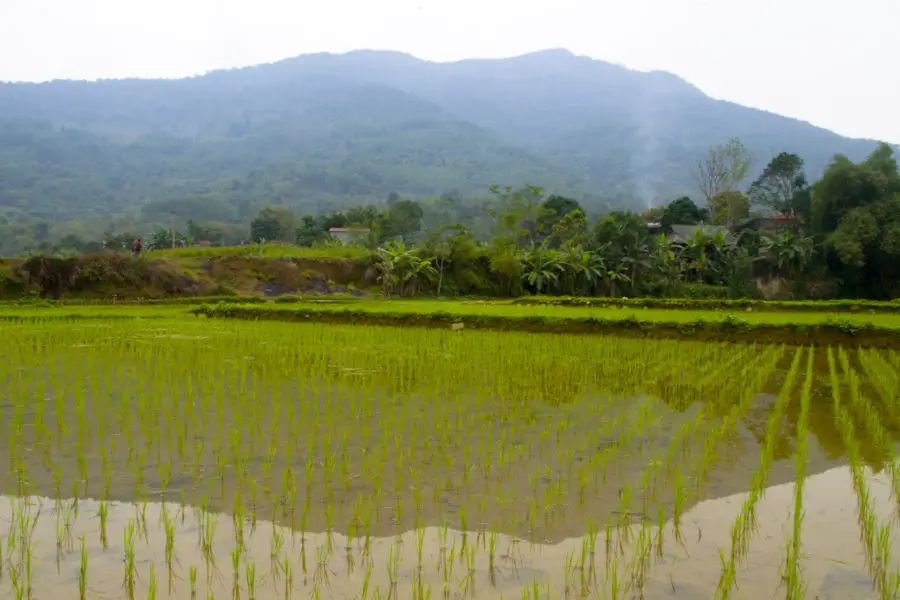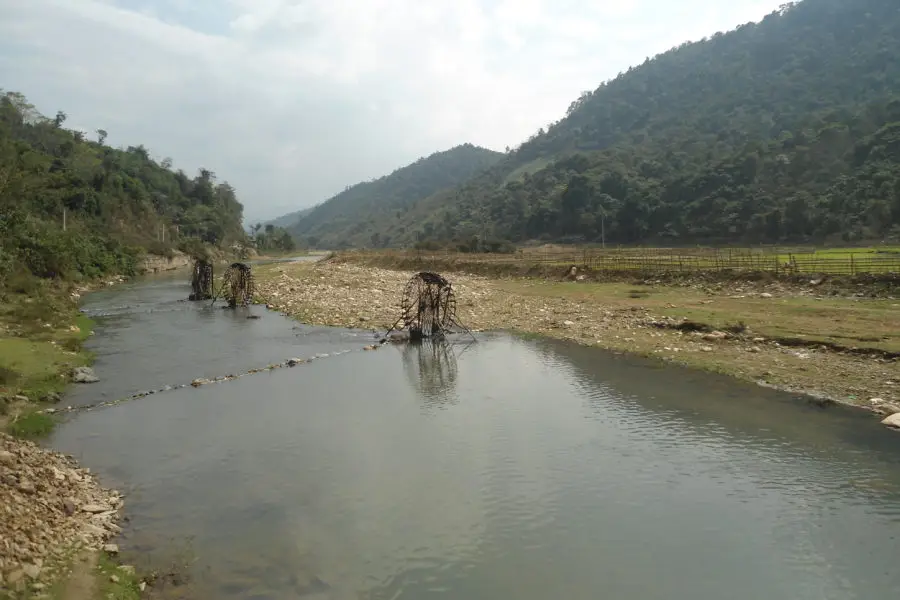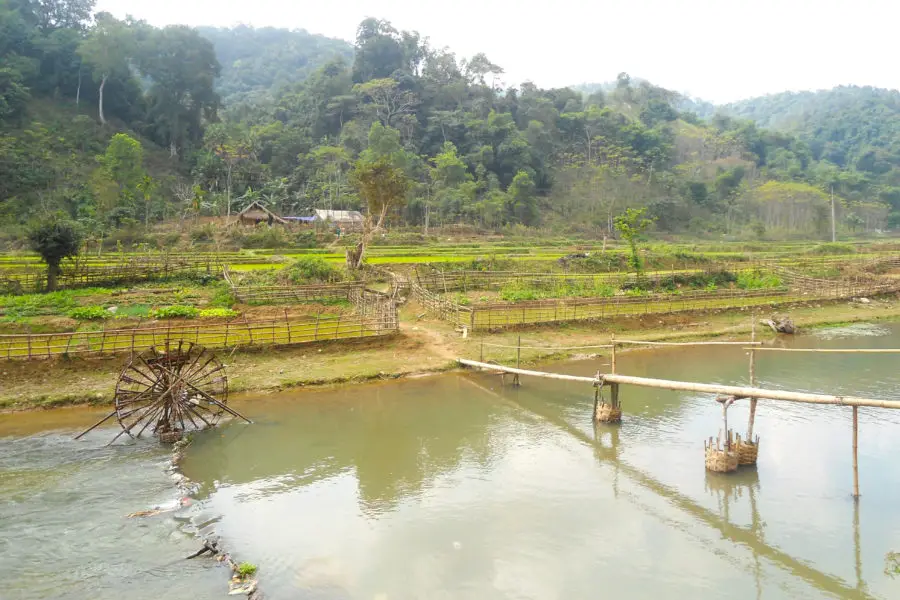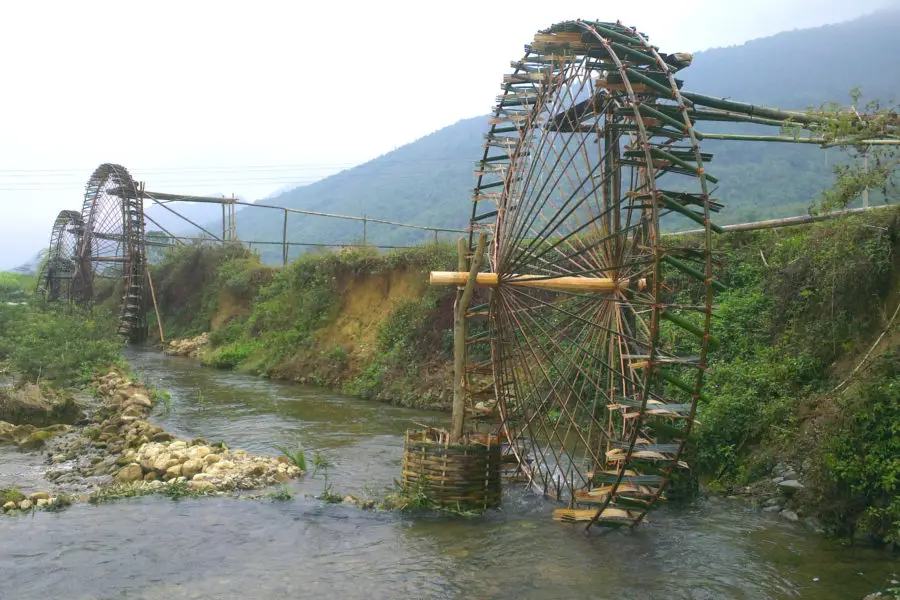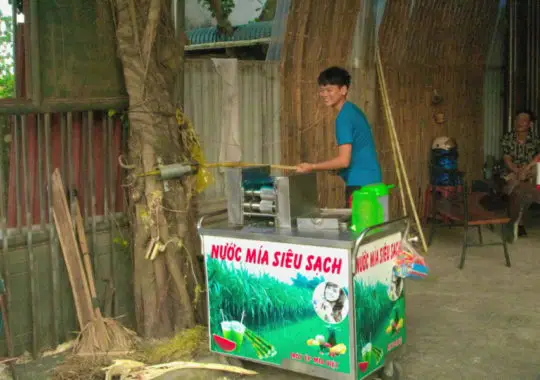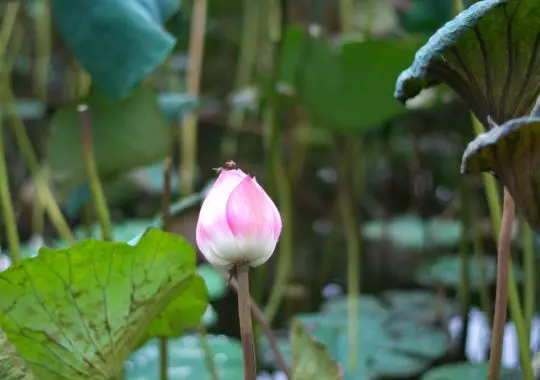Water Wheels of Vietnam
An interesting sight you may come across on motorbike tours of Vietnam is water wheels. Locally water wheels are known as Guồng nước or Cọn nước. They are handmade structures used for irrigation of farmland – mainly rice paddies. These clever machines lift water above river banks to provide sustenance to higher fields and homes.
After the water is raised by the wheel it flows into long pieces of bamboo that are cut in half. The lengths of bamboo are used as aqueducts to redirect water to where it’s needed- it is all done without electricity, harnessing the natural energy of streams and rivers. Water wheels are very well crafted and it is well worth stopping to inspect them when you happen upon some. They are very tranquil to watch and some even emit a slow organ or flute-like resonance along with the sound of flowing water.
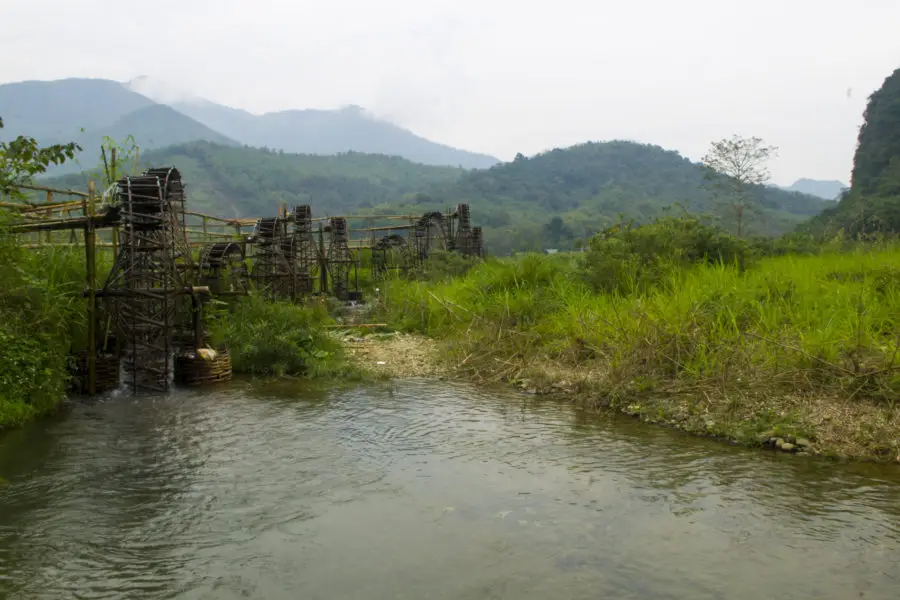
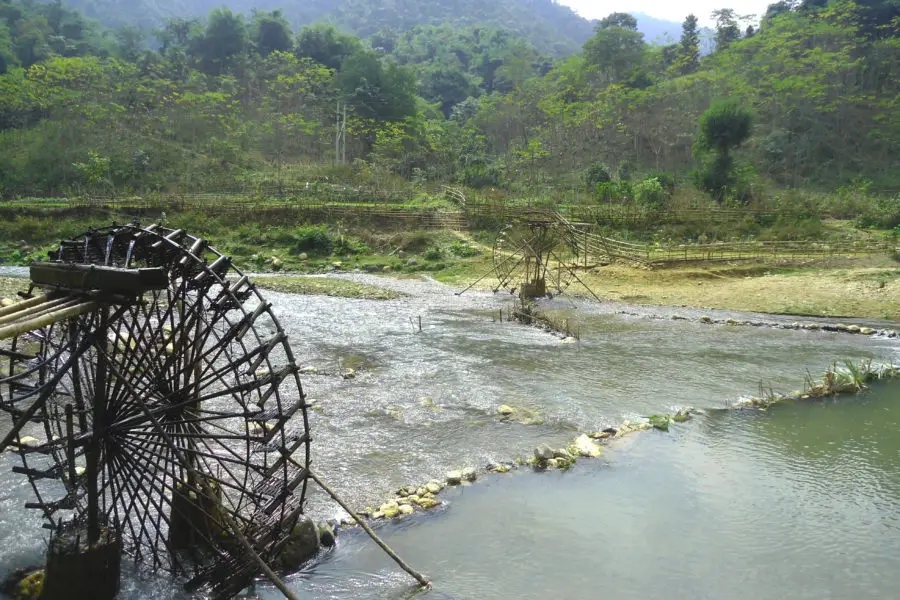
Where to find water wheels in Vietnam
Most water wheels are found in hilly and mountain areas where water needs to be elevated from rocky streams. There are water wheels in the south and central of Vietnam but the majority of them but the biggest and most impressive wheels are in the north.
Some areas of water wheels have now become tourist attractions where local Vietnamese like to take photographs, swim, and have lunch. Na Khuong in the far north-western Lai Chau province is now well-known – there are some 25 water wheels here built on the Nam Mu River. Here you can eat local specialties such as roasted freshwater fish on bamboo stakes. You can also hire ethnic minority clothing for photoshoots alongside the wheels.
Other notable areas of water wheels are Muong Lo in Yen Bai, Muong Thanh in Dien Bien, Chiem Hoa in Tuyen Quang, and closer to Hanoi – in Hoa Binh and along the Nam Ma River in Thanh Hoa.
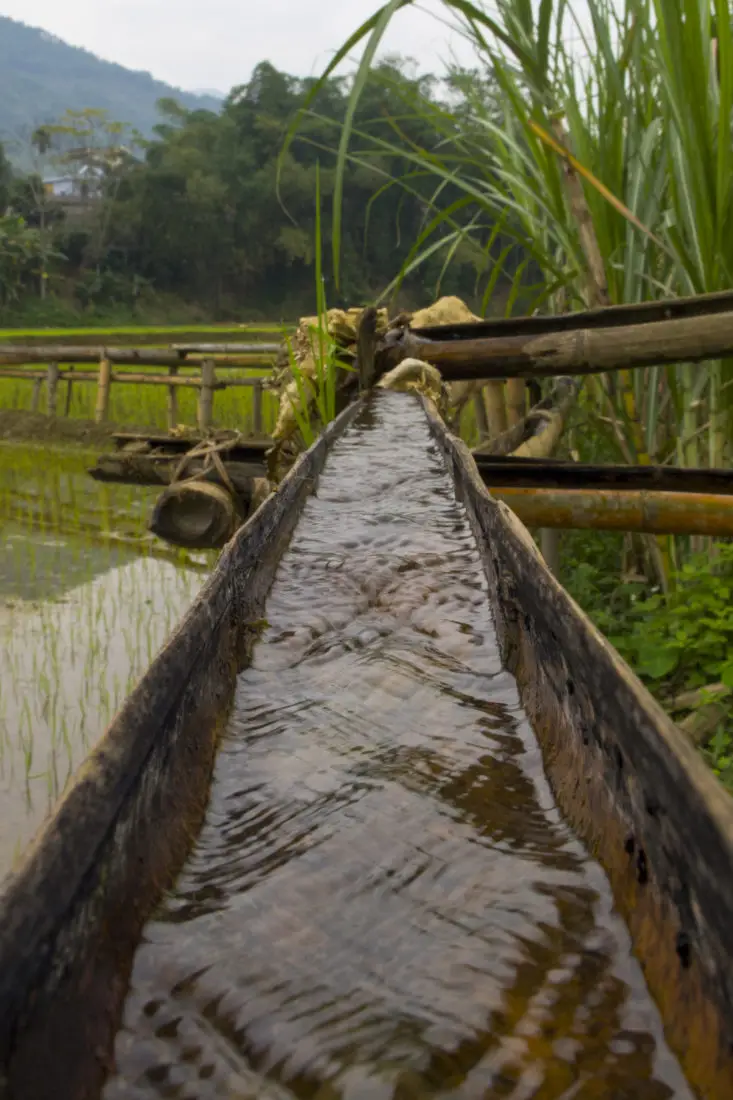
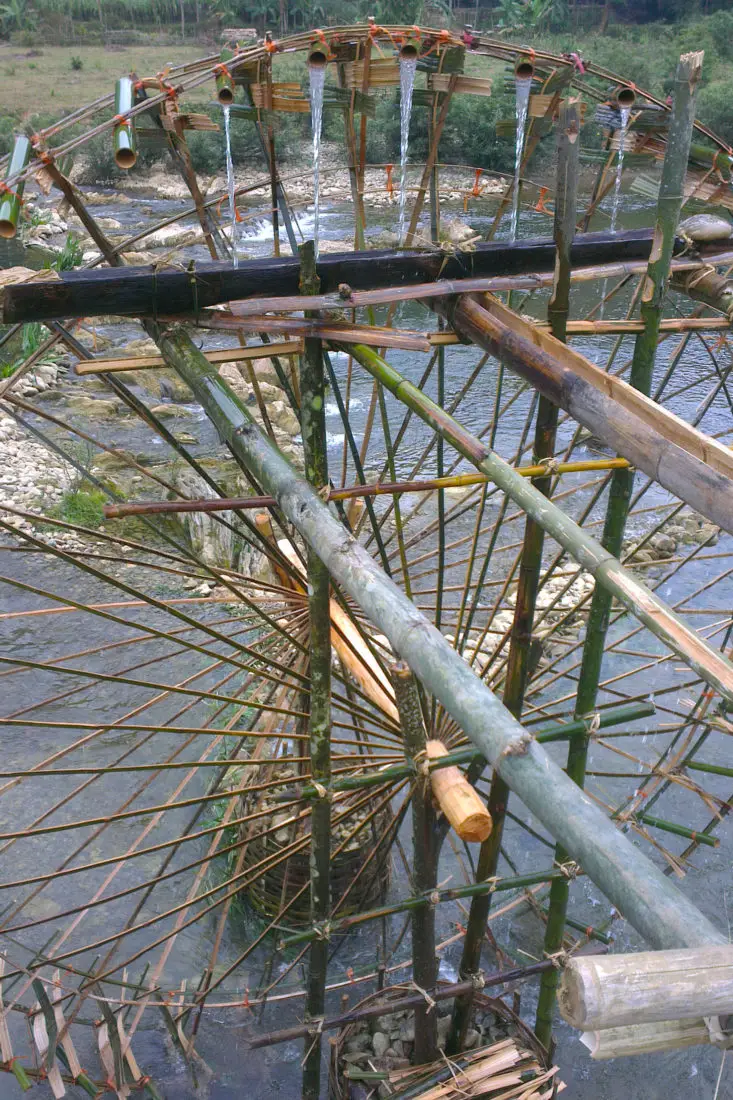
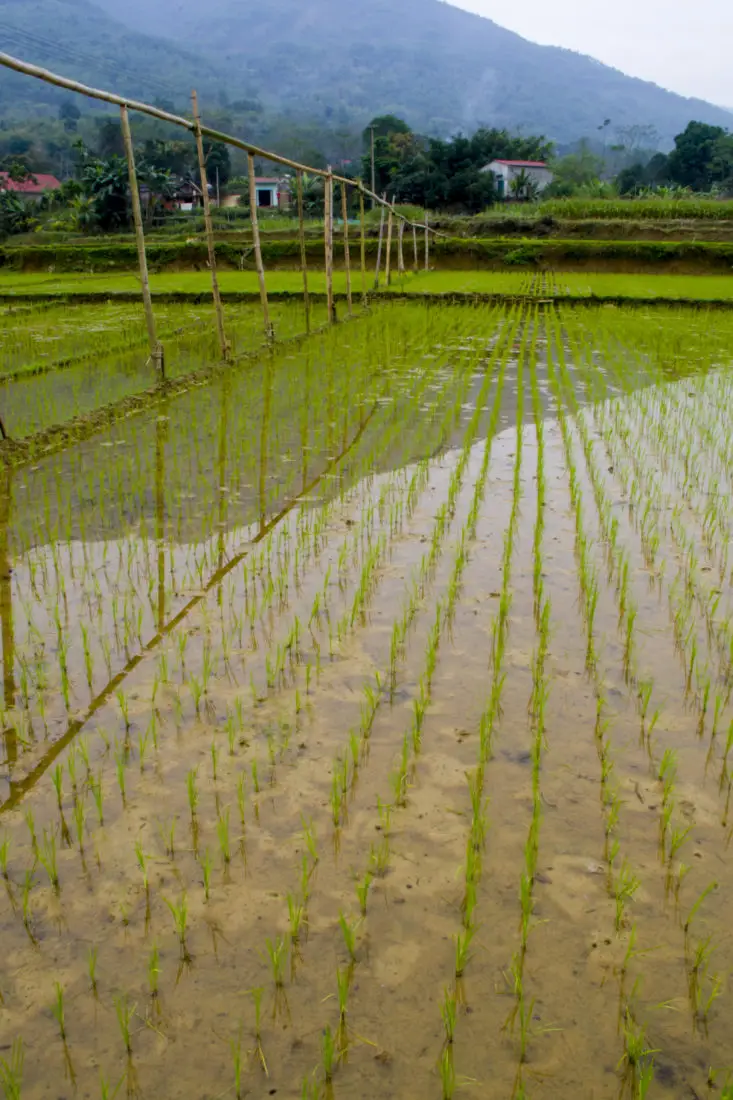
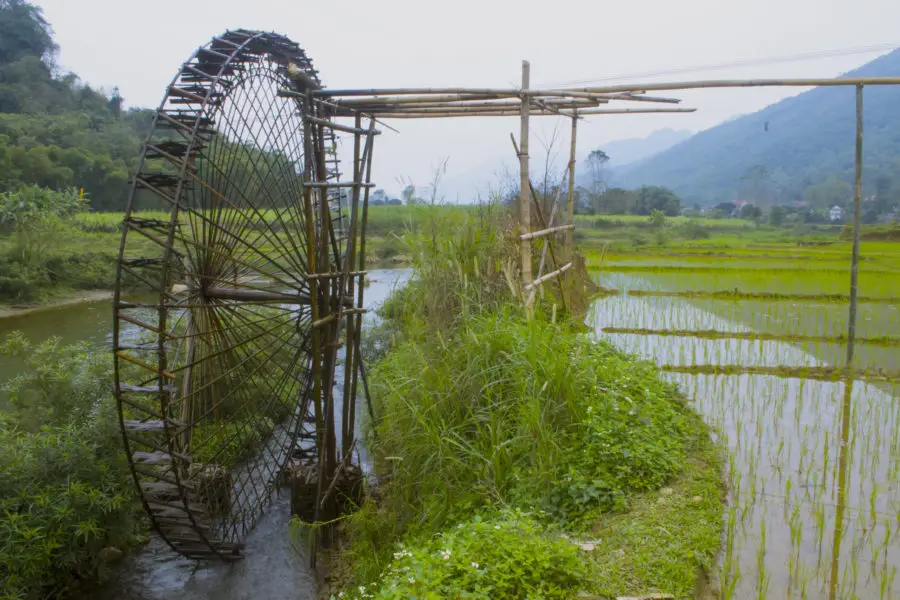
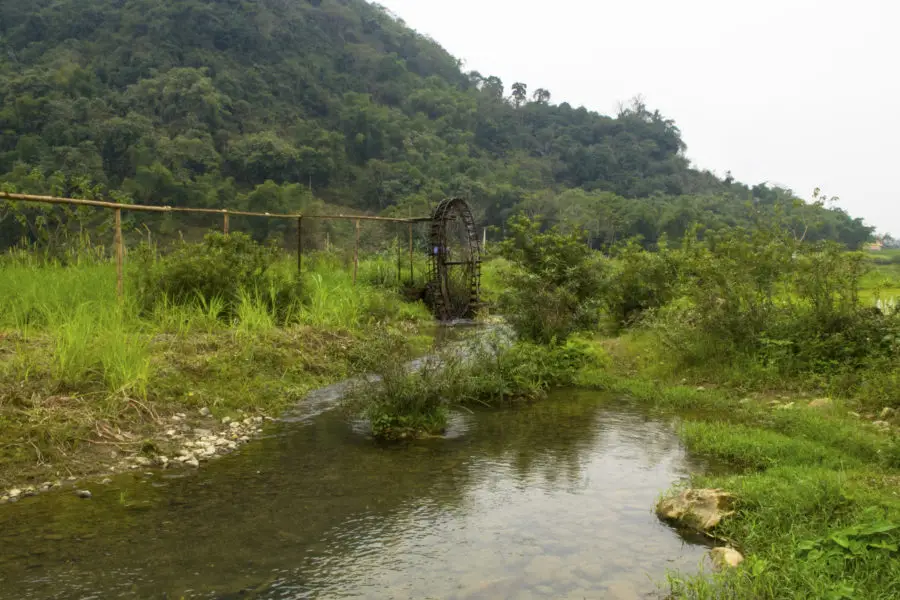
The construction of water wheels
Water wheels are constructed by the Thai, Muong, Nung, and Tay minorities. Traditionally they are built before a new crop of rice is planted to reduce the labour of carrying water.
Water wheels are made of bamboo and wood. Two concentric circles of bamboo are joined with horizontal sections of bamboo that act as wiper blades; sometimes woven bamboo panels are used. To pick up and release the water short lengths of bamboo with a node at one end are attached to the wiper blades at a 45-degree angle. The water dispenses into a trough at the top of the wheel which is more often than not a hollowed-out log. The log has a hole drilled in its side for the water to enter the aqueducts. The axel is commonly a strong, straight log to which the bamboo spokes are attached. Usually large logs hold each end of the axle up although sometimes bamboo posts are used. Once put in place, a completed water will is held securely with baskets of rocks at its base. A diverting channel is sometimes dug to direct flow under the wheel for the wheel to be turned by river flow more effectively.
These ingenious contraptions can vary in size with diameters ranging from a modest 3 to a whopping 8 metres. During some of Vietnam’s drenching wet seasons, the water wheels are washed away and need to be constructed again.
